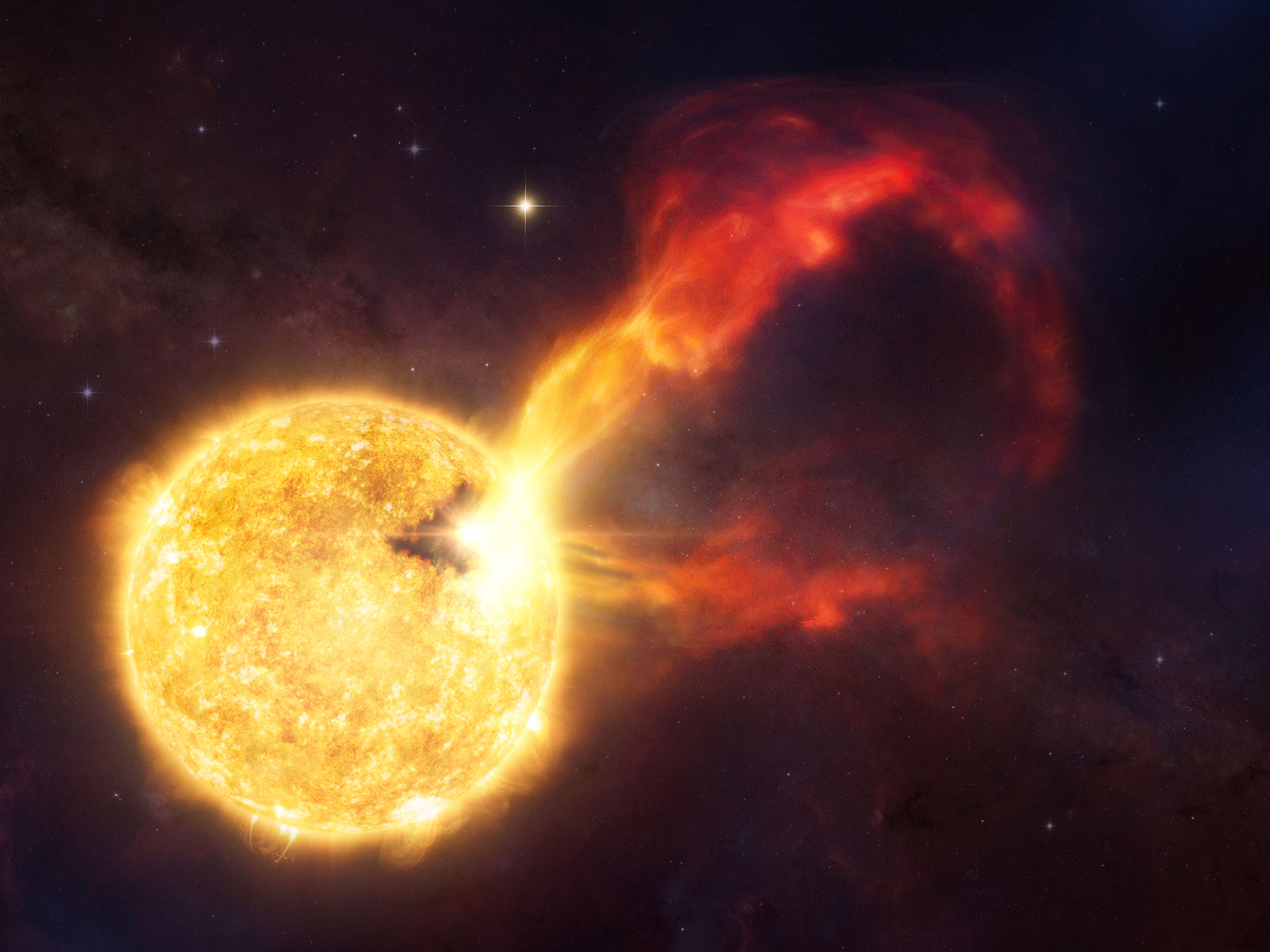Image List
-

An artistic representation of a flare from HD 283572, a young nearby star. During quiescent (or quiet) periods, HD 283572 cannot be detected with the Submillimeter Array (SMA). However, on January 17 2022, an extreme flare event occurred, just when the SMA happened to be observing HD 283572. The SMA detected the rare, millimeter--wavelength part of this event, which could have produced a flaring loop that spanned a size larger than the entire star, with an energy output of over 1,000,000-times that of the millimeter flares produced by the Sun's nearest stellar neighbors.
Credit: CfA/Melissa Weiss -

Labeled version - Images of the young star HD 283572 and its surrounding field. The large image shows optical and infrared data from the Digitized Sky Survey (DSS), and HD 283572 is the bright star near the middle of the image, highlighted by a square. The insets show Submillimeter Array (SMA) images centered on HD 283572 taken on January 14th and 17th, 2022 and March 27th, 2023. The red source in the middle panel shows the flare witnessed on January 17th. The star was not detected by the SMA on the other two days, nor in five other SMA observations not shown here. The DSS image is 20 arcminutes across (2.3 light-years at HD 283572's distance of 400 light-years) and the SMA images are 24 arcseconds across.
Credit: CfA/J. B. Lovell et al. -

Unlabeled version - An image of the young star HD 283572 and its surrounding field using optical and infrared data from the Digitized Sky Survey (DSS). HD 283572 is the bright star near the center of the image. The image is 20 arcminutes across, equivalent to 2.3 light-years at HD 283572's distance of 400 light-years.
Credit: CfA/J. B. Lovell et al.